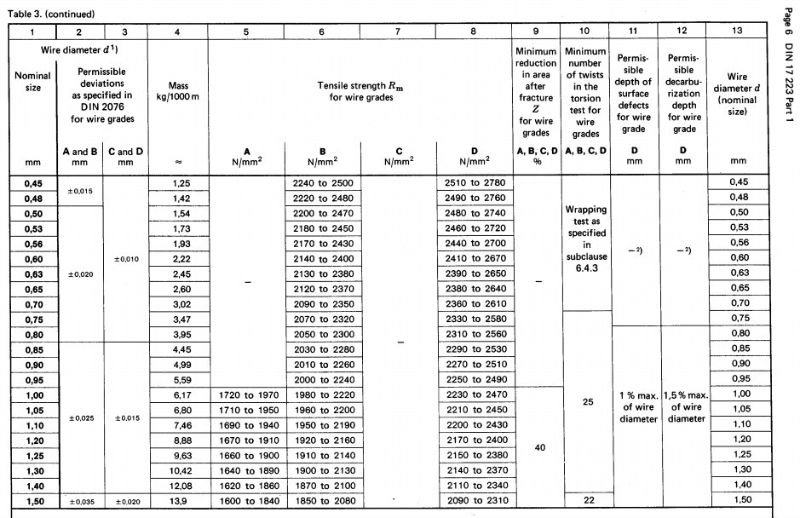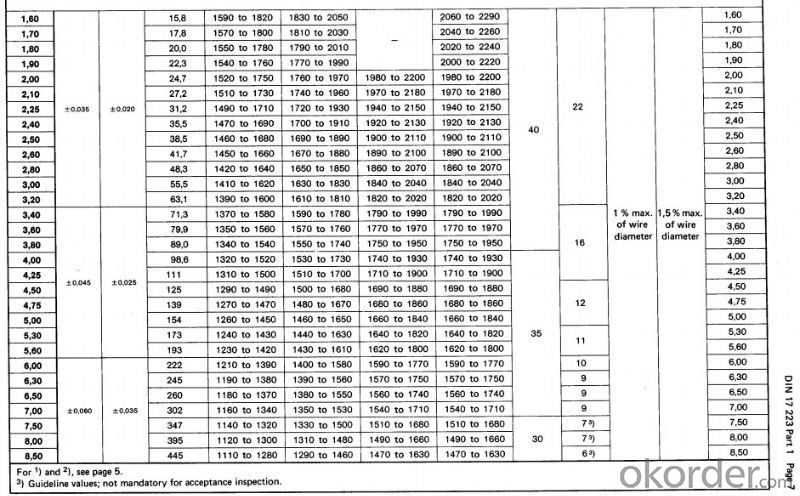Packaging & Delivery
| Packaging Details: | COMMON COIL, 350-400KG Z2 COIL, AROUND 800KG BIG COIL WITH CARDBOARD WHEEL. |
|---|---|
| Delivery Detail: | 10-15 days |
OKorder Service Pledge
OKorder Financial Service
You Might Also Like
Steel Grade:Q195,Q235,45#,60#,65#,70#,72B,80#,82B,65Mn
Standard:AISI, ASTM, BS, DIN, GB, JIS
Wire Gauge:0.3-13.0mm
Place of Origin:Zhejiang, China (Mainland)
Type:Drawn Wire
Application:Manufacturing
Alloy Or Not:Non-alloy
Special Use:Cold Heading Steel
Model Number:Q195,Q235,45#,60#,65#,70#,72B,80#,82B,65Mn
Brand Name:huixin
black:bright and smooth
| Packaging Details: | COMMON COIL, 350-400KG Z2 COIL, AROUND 800KG BIG COIL WITH CARDBOARD WHEEL. |
|---|---|
| Delivery Detail: | 10-15 days |
STANDARD: DIN 17223



1. Manufacturer Overview |
|
|---|---|
| Location | |
| Year Established | |
| Annual Output Value | |
| Main Markets | |
| Company Certifications | |
2. Manufacturer Certificates |
|
|---|---|
| a) Certification Name | |
| Range | |
| Reference | |
| Validity Period | |
3. Manufacturer Capability |
|
|---|---|
| a)Trade Capacity | |
| Nearest Port | |
| Export Percentage | |
| No.of Employees in Trade Department | |
| Language Spoken: | |
| b)Factory Information | |
| Factory Size: | |
| No. of Production Lines | |
| Contract Manufacturing | |
| Product Price Range | |
Send your message to us
OKorder Service Pledge
OKorder Financial Service
Similar products
New products
Hot products
Hot Searches
Related keywords